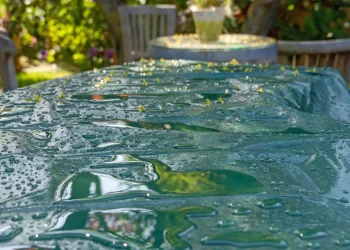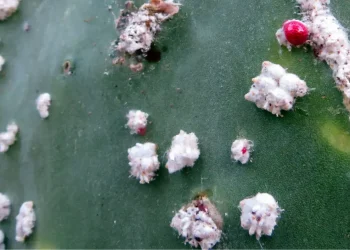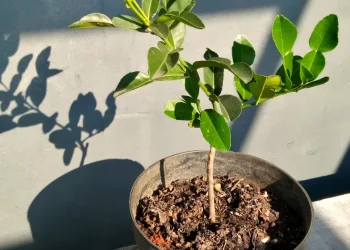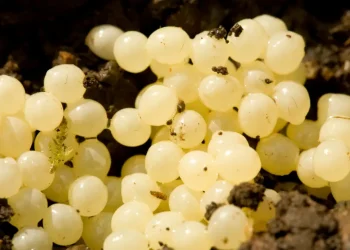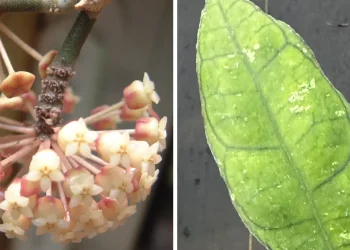If you’ve noticed that new leaves on your Monstera are getting smaller and smaller, chances are that your plant is not receiving the ideal care. Factors such as lighting, lack of water or nutrients, low humidity, or harsh temperatures can all play a part.
But at the same time, it’s important to acknowledge that only a fully matured Monstera grows giant leaves. Sometimes, a Monstera might surprise you with a huge leaf seemingly out of nowhere. It can put out a gigantic leaf almost by accident while the rest of the foliage remains small.
In this guide, we’ll address this common concern and take a look in detail at all the different factors that can cause your monster leaves to get smaller.
How Big do Monstera Leaves Grow?
Monstera plants originate from the tropical rainforests of Central and South America. In the regions they call home, such as Mexico, Panama, and southern Columbia, you can find them nearly reaching the sky with an average height of 15 feet (4.5 meters, but it’s not uncommon to find one extending higher than 6 average single-story houses put on top of each other, to a height greater than 60 feet (18.25 meters).
In the wild, their leaves are also quite enormous, up to 35 inches (90 centimeters) long and 30 inches (75 cm) broad.
You certainly won’t be able to recreate that in your living room. The exact size can also vary due to genetics, but it’s especially limited by the container it lives in. You can expect your Monstera to reach half its outdoor potential and get leaves as big as 18 inches across (45 centimeters).
But that takes time and quite a lot of it. On average, it typically takes anywhere from 2 to 5 years for a Monstera to mature and start displaying larger leaves. Young Monsteras will always start with smaller leaves. That’s also the time when the leaves start to split.
Why are Monstera Leaves Getting Smaller
If your Monstera is mature enough, reaching the two to three-year mark, but new leaves are still growing very small, or you can barely notice any change at all, several factors may be affecting its growth.
It can be challenging to uncover the real culprit. You should rather take these factors and use them as a comprehensive approach to caring for your Monstera.
1. Not Enough Sunlight
Insufficient sunlight is a common reason for Monstera leaves to grow smaller than expected.
Monsteras are native to the tropical rainforests of Central and South America, where they thrive in the dappled sunlight that filters through the dense canopy. When they don’t receive enough light in your home, they may respond by producing smaller leaves as a survival strategy.
If sunlight is the cause, you can also notice thinning of the leaves or slight discolorations here and there.
With light, it’s this long cycle. When a Monstera doesn’t receive enough sunlight, it can’t photosynthesize effectively, which can lead to decreased chlorophyll production, the green pigment that makes the leaves naturally green, and decreased energy production. The plant becomes stressed, and as a response, in order to save more energy, it produces either fewer or smaller new leaves.
Monsteras should get at least 8 to 10 hours of bright, filtered light every day. In order to fulfill that, start by choosing the right spot for the pot. Usually, an east or south-facing window is ideal. If your place doesn’t receive that much light, consider supplementing it with a growth light.
2. Overwatering or Underwatering
Both underwatering and overwatering are really bad for your Monstera and can lead to smaller leaves.
Excessive water can not only stress the plant to produce less vital and smaller leaves but also cause more serious issues like root rot or overall yellowing and eventual leaf drop. Excess moisture also creates a welcoming environment for pests or fungi.
Usually, it’s a lot better to underwater your Monstera than to overwater it. The lack of moisture affects the plant’s ability to perform crucial functions like nutrient uptake and photosynthesis, which can prevent it from growing big and healthy leaves.
You have one undeniable advantage when growing plants in pots. You can always check the moisture of the soil with your fingers. If you feel that the top inch of soil is excessively wet, wait a few extra days before watering again.
3. Monstera doesn’t have Enough Nutrients
All plants need a balanced palette of nutrients to thrive. If you recently replanted your Monstera, you can put it out of your mind – fresh soil is full of nutrients. But these nutrients are slowly running out, and after a year or so, you may need to feed your Monstera with a balanced fertilizer.
Make sure to follow the instructions precisely. Adding too much fertilizer can do more harm than good.
However, at the same time, the soil can be rich in nutrients, but your Monstera may still showcase nutrient deficiencies. That’s because low levels of nutrients are not the only issue. Soil pH levels limit the availability of certain nutrients. In alkaline soil, minerals like calcium or magnesium are easily accessible to plants. But when the soil is more acidic, these minerals are essentially locked away, and others become more available.
But plants need more or less all nutrients. Monstera is a plant that does well in slightly acidic soil, between 6 and 7 pH.
4. Low Humidity or Bad Air Circulation
Inadequate humidity levels and poor air circulation can also contribute to smaller Monstera leaves.
Monstera plants are native to humid rainforest environments, and they thrive in high humidity. When grown in dry indoor conditions or areas with limited air circulation, Monstera plants may struggle to transpire efficiently, impacting their overall leaf size.
To combat this issue, consider increasing humidity levels around your plant by regularly misting it, or you can place a tray with water nearby.
5. Pest Infestation or Diseases
Pests or fungi can affect the overall health of your Monstera. When infested, the plant is not able to perform all the processes as effectively as before, which causes stress and can manifest as smaller leaves.
Pest infestation or diseases should be easy to differentiate from other causes I described, as you’ll able to spot other signs. For instance, as mealybugs feed on the sap, they will leave white sticky spots behind them.
Don’t be afraid to reach for insecticide or fungicide right as you spot the first signs. Pests or fungi can spread very fast, and before you know it, your whole home garden can be infected.
Pests or diseases are usually tight to another issue, for instance, excessive moisture. Just solving these little bugs won’t solve small Monstera leaves if the underlying issue is not also solved. In that case, a pesticide is just a temporary solution.
Will Small Monstera Leaves Split?
The answer to this question lies in the age and maturity of the plant. If your Monstera is still young, the leaves will naturally be small and start as solid, without holes.
As your Monstera grows and matures, it’s more likely to produce leaves with fenestrations and even turn previously small leaves into bigger ones with holes.
However, if the plant produces small leaves as a reaction to stress, you may never see the leaves splitting. If that’s the case, focus on solving the underlying issue as overwatering or underwatering and inadequate sunlight.
Should I Cut Small Leaves Off Monstera
Cutting off smaller leaves will not benefit your Monstera or make it grow bigger leaves. There are two possible scenarios:
- The leaves are still green, meaning the plant still uses the leaves to photosynthesize and produce energy. Your Monstera can then use this energy for additional growth – whether growing new leaves or growing smaller leaves bigger.
- If the leaves are yellow, they do not waste any energy from the plant. Your Monstera stopped feeding them a long time ago. In this case, cutting those leaves off your Monstera won’t make any difference other than esthetical.
However, do not hesitate to prune leaves that are no longer beneficial for the plant. If you see that some leaves are too small, unhealthy, or/and damaged, removing them can benefit the plant in the long run.
Before you go…
Now that you have all the information you need to grow bigger and healthier leaves on your Monstera, it’s also very much possible to grow a Monstera that is too big to be without support. When your Monstera gets too big, the stem can easily snap. In that case, my other guide on repairing broken Monstera stem may come in handy, don’t miss it…




